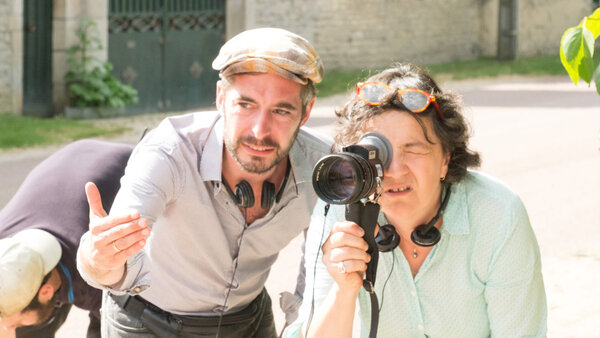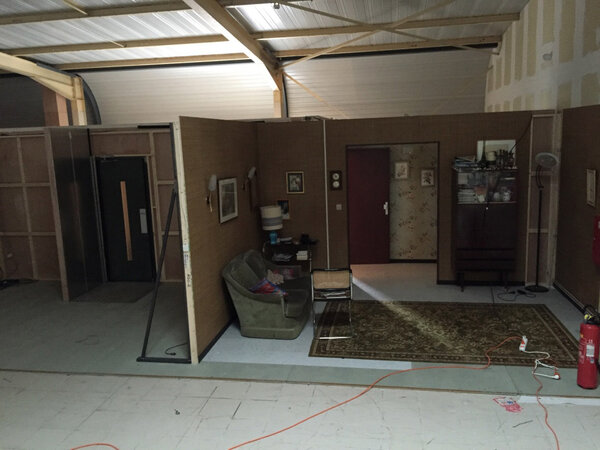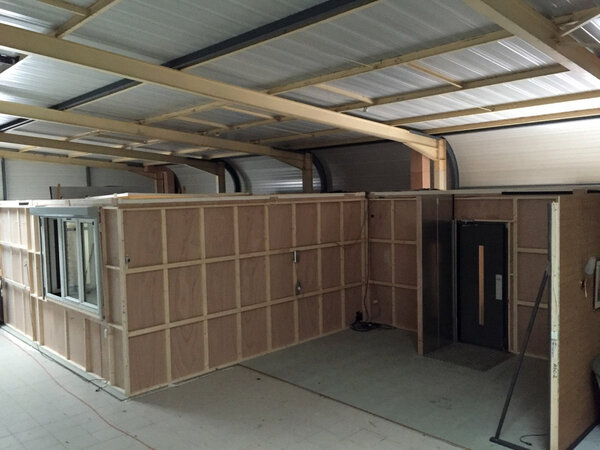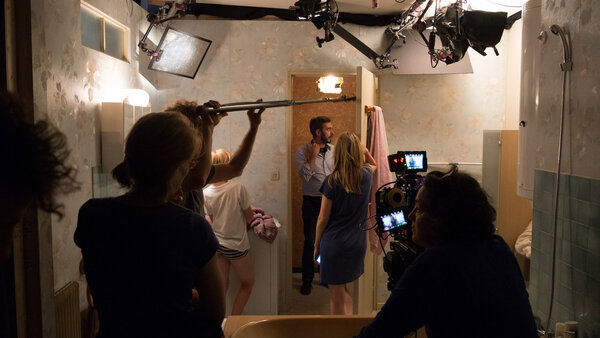Cinematographer Natalie Durand, AFC, discusses her work on Xavier Legrand’s film "Custody"

What sort of director is Xavier Legrand ?
Nathalie Durand : Because Xavier is himself an actor, his approach as a director is to immerse his actors in reality as much as possible during shooting. That means that on set, there are simple devices that allow the actors’ performances to be anchored in the real, which was important especially for Thomas Gioria, a 12-year-old actor whose first experience it was acting in film. For example, although a lot of scenes are set in the father’s car, we quickly decided not to use a travelling car. All of those scenes were shot from inside the Kangoo with the camera inside, or set up on a Speed Grip.
In order to provide the director with as much time as possible, we had two identical cars. One was set up for indoor shots with the lighting and the hooks, the second for outdoor shots. We tried to vary the angles as much as we could within the car, while paying attention that they made sense in relation to the narration and the mood of the scenes. We wanted to make sure we kept the reflections on the windows or windshield in some of the scenes in order to enhance the actors’ emotions.
When you see the film, you realize that he also likes using camera movements as a tool…
ND : It’s true that there are long, moving shots : they are the translation of Xavier’s desire to draw out the transitions, and to fully show the passage from one place to another and sometimes from one emotion to another… As an example, I’d point out the scene where the child exits his grandparents’ home when his father comes to pick him up for the first time. That movement was pretty complicated because we had to pass over a low wall in order to film it. The grips built an overhead tubular structure that we could hang the camera from (stabilized on a Ronin) during the shot. The idea of “real” duration, of a feeling of continuity, is also very strong in the party scene.
There is also the long take filmed with the Steadicam, operated by Alexandre Viollaz, during which you have to guess what’s going on from the image because the sounds of the music and the party intentionally obscure the viewer’s ability to understand the dialogue… This shot was filmed with music at top volume on set, so that we could achieve the feeling of maximum reality in the actors’ performance. Unlike what often happens during editing with a long take like that, we didn’t cut it short and it was included in full in the final cut. Admittedly, that entire part of the film was built around the length of the song.
How did you light that shot ?
ND : Xavier really wanted to keep a low level of lighting, similar to what you’d experience in a multipurpose room being used for a low-budget family event. Here, too, the pursuit of reality prevailed over purely aesthetic concerns. The Zeiss GO series came in handy for this type of scene !
The conciliation scene that opens the film also belies a very strong desire for temporality…
ND : That opening scene is a bit on its own in relation to the rest of shooting. First of all, it was the only part shot in Paris (the rest of the film was filmed in Dijon, Beaune, and Chalon-sur-Saône). Secondly, it’s a very unusual way of opening a film, that does indeed play on the real experience of the passage of time and that makes up a third of the film in the final cut. In order to film it, we made an exception by using two cameras so that we could obtain the most material possible from the actors’ performance.
How did you approach filming in the flat, which is the main setting for the story ?
ND : Our decision to reconstruct the council flat in studio was one we made very early on whilst preparing the film. Many scenes were to take place there, and of course we were limited as to the times of day we were allowed to film given the presence of our young actor, and the ending of the film pretty much made it impossible for us to shoot in a real council estate – unless we had been able to find an uninhabited building. Furthermore, Xavier had very precise ideas as to the flat’s geography, from the layout of the rooms in relation to the hallway, the location of the bathroom (an extremely important place for the film), and the fact that the bedroom had to be facing the entrance to the flat. Since all of these elements were precisely described in the screenplay, it would have been very difficult to find a real flat that corresponded to the scenography Xavier had in mind. Jérémie Sfez, our production designer, and his crew therefore built the flat and the landing outside with the neighbour woman’s flat across in a hangar in Beaune (next to Claude Lelouche’s cinema workshop).



How did you light the set ?
ND : As one does, we did tests on the colour and texture of the flat’s walls… We had two little windows (the apartment is supposed to be on the eighth floor, but we didn’t film them very often as Xavier wanted to keep the feeling of isolation.
In terms of lighting, I didn’t have a lot of space to work in because of the physical constraints of the hangar and I didn’t have a technical grid either. For reasons related to the same concern regarding realism, we’d built ceilings. So I ended up lighting from the windows with Smartlight SL1 and Minis, a Skypanel (mostly used in indirect lighting from outside the set), a few K 5600 Jokers, two Arri M18s, and one Alpha4. A lot of light came from the prop lighting on set, in the bathroom or on the landing. What we could play with on set was how to vary the light quality, since a lot of scenes—besides the denouement at night— were filmed at different times of day. I tried to vary the light quality in function of the dramaturgy as well. It was a good excuse for us to not have to always film in the same lighting !
Did you do image tests ?
ND : A lot of testing was done beforehand. Once again, I appreciated the way we were taken care of by Samuel Renollet and Fred Lombardo of RVZ. It was down to a final comparison between the Arri Alexa and the RED, with spherical and anamorphic lenses. Honestly, there were things that were good about each configuration, but due to problems with the minimum focal distance in the car or the blurs on the Scope that were too strong for Xavier’s taste, we decided we had to film with spherical lenses. So we opted for a combination of a RED Weapon in 2.39/5.5K and a Zeiss GO series that gave us a more highly-textured result with colours that were a bit less clean, which we really liked.
How did colour grading go ?
ND : Isabelle Julien and her company Ike No Koi handled postproduction. Every day I would send my intentions to her via Fireday, which allowed us to approach colour grading with already-established ambiences. We spent a lot of time on the opening scene, where it wasn’t easy to match the two cameras from all angles… The long take that opens the last scene of the film also required a lot of work. The principle was to give viewers the impression that their eye was progressively getting used to the darkness, and that as the scene went forward, they would be able to perceive more and more of what was happening. I worked in very low lighting (following the principle of realism for the actors) and very progressively opened the aperture. Isabelle Julien knew how to make the most out of it, which was a true challenge.
Synopsis :
The Besson couple is getting a divorce. In order to protect her son from his father, whom she accuses of being violent, Miriam requests sole custody. The judge in charge of the case grants joint custody to the father, whom she perceives as being taken advantage of. Taken hostage between his parents, Julien attempts to do whatever he can to stop the worst from happening.
Producer : Alexandre Gavras for KG productions
Director : Xavier Legrand
Cinematography by : Nathalie Durand, AFC
Production Designer : Jérémie Sfez
Editing : Yorgos Lamprinos
Sound : Julien Sicart
 En
En Fr
Fr





